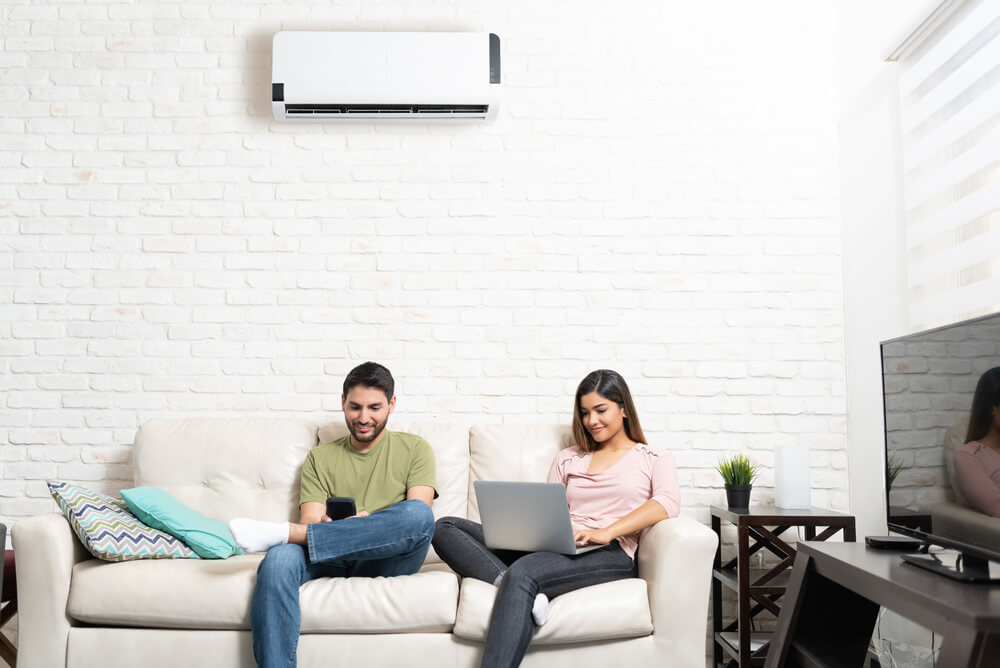
While thousands of Australian households have seen their electricity bills increase, new research from Compare the Market has revealed the surprising devices driving up bills and the small changes that could help you save big.
Compare the Market’s Head of Energy, Meredith O’Brien, says that if you’re in the market for a new device or appliance, you should pay close attention to the energy star rating.
“Households are feeling the sting of these higher prices and we know that opting for appliances with a higher energy star rating are typically more energy-efficient and use less electricity than those with a lower rating,” Ms O’Brien said. “With many households turning up the heat as the temperature dips and retailers passing higher costs on to consumers, the last thing we want is Australians to receive a bill shock.”
The label on most appliances shows a star rating from one to six stars (and sometimes up to 10): the more stars, the more efficient the product.
For example, a 55″ TV with a 7-star rating can cost around $60 a year to run, while the same TV with a 3-star rating can cost around $146 a year to run. Similarly, a 500L fridge with a 2-star energy rating has an average annual running cost of $163, while the same sized fridge with an energy rating of 4 stars only costs around $96 to run per year.
“That’s a saving of $86 a year on your TV alone and $67 on your fridge,” Ms O’Brien says. “If you factor in other appliances, there’s potential to claw back even more cash.”
| Appliance | Low star rating average annual cost | High star rating average annual cost | Annual average saving |
| Clothes dryer | Speed Queen 9kg dryer 1 star – $432.90 | Fisher and Paykel 9kg 10 star -$94.50 | $338.40 |
| Washing machine | Speen Queen 10kg front loader 2 star – $104.40 | Electrolux 10kg front loader 5 star – $27.51 | $76.89 |
| Dishwasher | Verso 14 place capacity 2 star -$57.60 | Miele 14 place capacity 4.5 stars – $24.69 | $32.91 |
| Fridge | Fisher & Paykel 113 L 1 star – $88.80 | Sub-Zero 114L 5 stars – $25.50 | $63.30 |
| TV | Samsung 65-inch 1 star – $246 | TCL 65-inch 8 stars – $52.80 | $193.20 |
| Computer monitor | Acer 27-inch 1.5 star – $49.68 | LG 27-inch 5.5 stars – $19.92 | $29.76 |
Based on an assumption that a household is charged 30c/kWh for electricity. Costs are estimates and will vary based on your plan and usage. Assuming the dryer, dishwasher, washing machine is used three times a week per year. Assumes a TV is used four hours per day a year and a computer monitor runs for eight hours per day a year. Sourced from the Australian Government’s Energy Rating website.
Ms O’Brien says that while appliances may have a smaller upfront cost, you may end up paying more if it’s not energy efficient, noting recent research around heating costs conducted by Compare the Market.
“It can be tempting to opt for those cheaper heating options like portable heating fans, but compared to a small reverse cycle split system, you could be paying 355% more over the winter months,” Ms O’Brien says. “It’s important to weigh up the total cost and not just the purchase price. Of course, other factors that can drive up costs of any appliance include how regularly you use them, their size and capacity and your electricity retailer’s usage rates.”
To help Australians pinpoint what could be chewing through their electricity, Compare the Market has devised a list of the biggest power guzzlers and potential saving alternatives.
| Power Guzzlers | Electricity Saving Alternatives |
| Heating: Heating uses around 40% of household energy use. Be sure to set the temperature to 18-21 degrees in winter. And of course, portable heating devices typically have a smaller upfront cost, but they generally chew through more electricity than reverse cycle split systems and can cost you more in the long run. | Alternative: You can reduce heating bills in winter by up to 25% by draught-proofing your home. If you do use a heater, remember that every degree warmer you set it can increase your energy usage by up to 10%. |
| Fridges and freezers: These are responsible for an average of 7% of household electricity use. Bear in mind, a 350L fridge with a 2-star energy rating will cost around $135 per year to run, while the same fridge with a 4-star energy rating will cost around $80 annually. | Alternative: Make sure you’re buying appliances that carry energy rating labels; these tell you how efficient the model is when compared to others of the same type and size. The more stars an appliance has, the more efficient it will be. Similarly, consider switching off spare fridges, as these could unnecessarily chew through electricity |
| Clothes dryers: These use up to 10% of household electricity for heavy users. A standard electric 4kg clothes dryer with a 1.5-star energy rating, used three times per week, will cost around $80 annually, whereas the same dryer with a 3-star energy rating used at the same frequency will cost around $58 per year. | Alternative: Consider air drying your clothes using a drying rack to significantly decrease your reliance on electricity-guzzling clothes dryers. And once again, choosing a model with a higher energy rating will significantly decrease your bill. |
| Washing machines: Clothes washers can cost you significantly more in electricity if you’re using hot water instead of washing your clothes on a cooler setting. The type, size, and energy rating of your washer will also dramatically affect your electricity bill. Every extra star on your energy rating could save a quarter of your machine’s energy use on a warm cycle. | Alternative: If you’re using hot water, consider using a front loader than a top loader, as they use roughly half the water of top loaders and are generally more energy efficient. Additionally, washing your clothes with cold water rather than hot water will reduce your electricity usage. |
| TVs, consoles, and home entertainment equipment: These account for up to an average of 5% of household electricity use. Like washing machines, the type, size, and energy rating of your TV are factors to consider when analysing your electricity bill. The larger and brighter the screen, the more electricity it will require to operate. | Alternative: Consider opting for an LED or LCD TV over the common plasma, as these are generally more energy efficient. Turning down the brightness of your screen will also reduce your bill. Furthermore, you can save energy by turning TVs off when no one is watching them. Regarding gaming consoles, switching these off after use could save up to $193 a year. |
Compare the Market comparison table: the power guzzlers vs the electricity savers.
There are also several other energy-saving solutions and gadgets available to Aussies, if you’re willing to shop around and do some research:
- Smart Thermostats: For those with ducted air conditioning and heating, smart thermostats allow you to control the temperature of your home virtually. If you forget to turn off your air conditioner in summer or your heater in winter, smart thermostats allow you to alter the temperature of your home while you’re out of the house.
- Intelligent power point adaptors: A main cause of energy-guzzling in your home could be what is known as “phantom power.” Devices that are plugged in but not turned on guzzle as much as 10 per cent of a home’s power. Intelligent power point adaptors detect when a device goes into standby mode and block power from the wall this way.
- Solar power: If you are working from home, do your washing during the day or set timers for the dishwasher & pool pump – use the appliances throughout the day so that you can maximise your electricity supply during sunlight hours.
- LED lighting: LEDs use about 75% less energy than halogen light bulbs and last five to 10 times longer, significantly reducing replacement costs and the number of light bulbs ending up in landfill.
Ms O’Brien says that Aussies everywhere need to take steps toward reducing their electricity consumption.
“Households are seeing prices increase across the board and we don’t want to see anyone paying more than they need to for their electricity,” Ms O’Brien says.
“Not all electricity plans are the same and you could be paying more than you need to for electricity, which could drive up your usage costs even more.
“If it’s been a while since you’ve switched electricity retailers or your bills have increased, our electricity comparison service allows you to compare a range of retailers and what they offer in one location.”
For more information, please contact:
Phillip Portman | 0437 384 471 | [email protected]
Compare the Market is a comparison service that takes the hard work out of shopping around. We make it Simples for Australians to quickly and easily compare and buy insurance, energy and travel products from a range of providers. Our easy-to-use comparison tool helps you look for a range of products that may suit your needs and benefit your back pocket.








